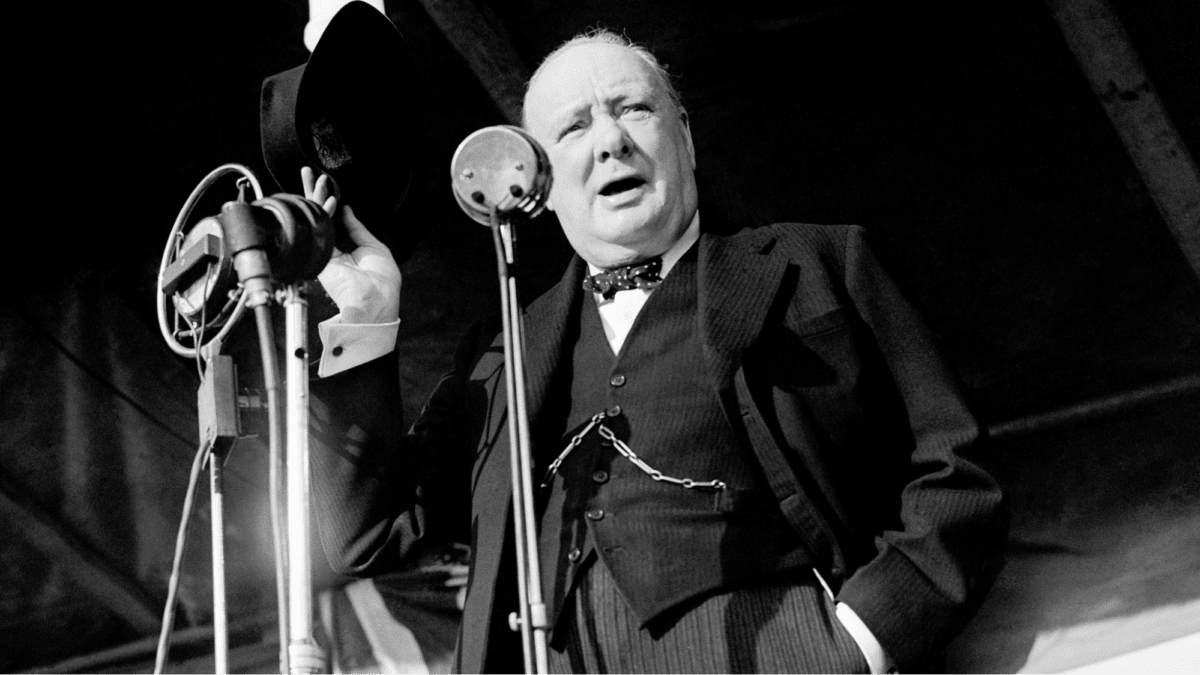blog | 4min Read
Published on November 14, 2022

– Eedha Kaul,
Oberoi International School
On May 13th, 1940, three days after taking over as Britain’s Prime Minister, Winston Churchill stood before the House of Commons and said—“I have nothing to offer but blood, toil, tears and sweat.” His speech lasted just five minutes. Heralded as one of the greatest speeches ever delivered, it firmly set the course for Churchill’s prolific career.
While Hitler was amassing power in Germany anew, Winston Churchill, reputed for his successful military and political prowess, spent much of the 1930s encouraging Britain to comprehend and accept the gravity of the situation. Britain, however, in its haste to avoid another conflict, disregarded the German threat. War ensued, and Neville Chamberlain quickly abdicated his position as Prime Minister. After the then-foreign secretary refused the job, Churchill was elevated to the Prime Minister’s office. As Britain began preparations for what was to become a ruthless, exhaustive battle, its chances looked bleak. Morale was low, and fear ran rampant. Amid this adversity rose Churchill, his speech infusing the nation with hope in one of its darkest hours.
In his distinctive writing style, Churchill repeatedly uses a combination of short, direct sentences followed by much longer sentences to elaborate on and substantiate statements made in the former. When disclosing the position of the armed forces, Churchill states, “The three Fighting Services have been filled. It was necessary that this should be done in one single day, on account of the extreme urgency and rigor of events.” In the first sentence, Churchill wastes no time delivering the necessary information. In the second, he incorporates an additional detail—“on account of the extreme urgency and rigor of events”—justifying the course of action described in the preceding sentence. The contrast between these sentences highlights differences in their purposes and value. While the first sentence is intended primarily to convey an essential piece of information, the second was likely crafted to ensure transparency in the discussed process. In this manner, Churchill effectively supports his decisions without compromising the integrity of his report.
This writing pattern is also apparent in the part of his speech where he discloses his plans and actions, stating, “I hope to complete the appointment of the principal Ministers during to-morrow. The appointment of the other Ministers usually takes a little longer, but I trust that, when Parliament meets again, this part of my task will be completed, and that the administration will be complete in all respects.” Once again, the first sentence is brief, simply stating a desire and fulfilling its purpose to inform. In contrast, a non-essential phrase breaks up the second sentence—“but I trust that”—which introduces and affirms Churchill’s stance on the situation and his forthcoming duties.
Although the first half of the speech is informational in nature, Churchill then switches the tone to bear an emotional appeal. With his promise of only “blood, toil, tears, and sweat,” he endears himself to his countrymen, gaining their trust and firmly establishing himself as one among them.
“We have before us an ordeal of the most grievous kind. We have before us many, many months of struggle and suffering.”—Churchill consistently incorporates personal pronouns and inclusive language to cement his endeavor to kindle unity, collaboration, and support. He uses repetition and rhetorical questions to convey his determination to lead Britain to victory—“You ask, what is our policy?” “You ask, what is our aim? I can answer in one word. It is victory. Victory at all costs—Victory in spite of all terrors—Victory, however long and hard the road may be, for without victory there is no survival.” His self-assurance reverberates through his audience, instilling in them the courage and resolve to continue fighting. This subtle and cleverly concealed method of empowerment establishes a common goal for which they must work and fight together.
Rather than sugarcoat the truth, Churchill repeatedly chooses a more forthright tone and manner of speech. Surprisingly, this brutal honesty fosters a sense of trust in the audience. By acknowledging and emphasizing the situation, Churchill encourages alertness, demonstrating his proactiveness amidst changing times. This admission showcases the strength of his language and how he holds himself while buffeted by adversities of change and conflict. His bluntness in describing the situation’s potential consequences, saying, “No survival for the British Empire, no survival for all that the British Empire has stood for,” stoked fear among his listeners, highlighting the need for urgent measures. This balance between awareness and panic, that Churchill weaves is an excellent representation of his leadership ingenuity. He exemplifies poise and elegance in a delightfully persuasive manner. His words are wrought with inspiration and authority. This speech is monumental: a beacon of hope.
Historians have attributed the original line about “blood, toil, tears, and sweat” to the nineteenth-century Italian revolutionary Giuseppe Garibaldi, who once marshaled his troops, promising them only “hunger, forced marches, battles and death.” But that doesn’t diminish Churchill’s brilliance in the least. Instead, it highlights his incredible ability to dive into the past and resurface with a gem that secures his reputation and his post as Britain’s Prime Minister through the end of World War II.
Churchill remains the only politician to win the Nobel Prize in Literature to this day. Indeed, in a time of chaos and fear, Churchill ingeniously applied the intricacies of language to inspire his people, garner their support, and establish an attitude of hope, strength, and courage.
Works Cited
International Relations and Security Network. Winston Churchill’s First Speech to the House of Commons. 1940, www.files.ethz.ch/isn/125391/1019_Churchill_blood_toil_tears.pdf.
Lindsay, James. “TWE Remembers: Churchill’s ‘Blood, Toil, Tears, and Sweat.’” Council on Foreign Relations, 13 May 2013, www.cfr.org/blog/twe-remembers-churchills-blood-toil-tears-and-sweat.
Rothman, Lily. “This Is the Speech That Made Winston Churchill’s Career.” Time, 13 May 2015, time.com/3848735/churchill-best-speeches-blood-toil-tears-sweat/.
Shmoop. “Blood, Toil, Tears, and Sweat Historical Context | Shmoop.” Www.shmoop.com, 2022, www.shmoop.com/study-guides/historical-texts/blood-toil-tears-sweat/historical-context.










